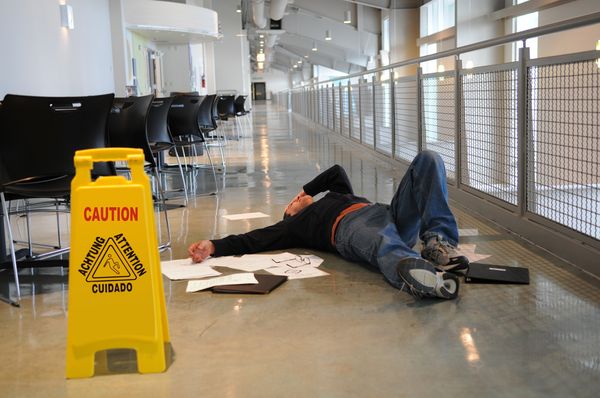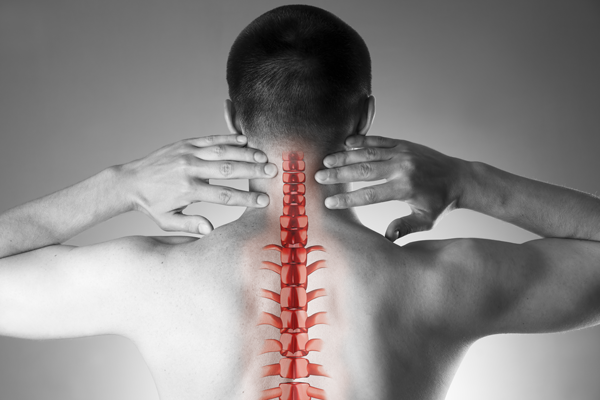- May 10, 2023
Meet Jerry. While driving to work a few months ago, he got into a serious collision. He walked away from the accident scene, filed an insurance claim, and continued with his life. Then, he started experiencing pain in his lower back.
Although mentally he felt fine, he had less energy, could not walk for long periods, and felt tired. He found himself thinking, “What gives?” Jerry’s symptoms were related to trauma he hadn’t released, and his situation is similar to many injured patients who visit Specific Care Chiropractic.
While the mind can perform amazing gymnastics to process trauma, the body sometimes isn’t as proficient. The body often holds onto trauma that we don’t fully realize, affecting our mobility and performance. We can teach you how the body releases trauma and guide you through the steps that go into healing.
How Trauma Is Stored in Your Body
Trauma can have long-lasting effects on the body and mind. When something overwhelming happens, the body goes on high alert. This stress response gets “stuck” in people with PTSD.
When someone has trauma stored in their body, it means that their brain stored their trauma in body memories. So, they keep reliving the past through physical feelings of fear or panic. Hormones like cortisol stay elevated, keeping the body constantly on edge.
Usually, we remember events actively over time. But with Post Traumatic Stress Disorder (PTSD), traumatic memories get locked in place. They replay as vivid images, sounds, or body sensations that won’t change. So, if you are holding onto trauma in your body, you will keep re-experiencing your body’s symptoms of trauma when you are triggered.
Why Your Body May Fail to Release Trauma
When trauma overwhelms your ability to cope, it can overload your nervous system and freeze its natural response process. This prevents the traumatic experience from being fully processed and integrated by your body, leaving it “stuck” inside your body instead, stored in the surrounding muscles, organs, and tissues.
The two of the key brain structures that are implicated in this “stuck” trauma response are the amygdala and the insula:
- The amygdala triggers the primal fight-or-flight reaction to perceived danger. But in trauma, this response never completes, so it resets.
- The insula regulates emotional intensity and the body’s stress response. But its ability to control reactions can become impaired.
As a result, trauma survivors often exist in a state of nervous system hyperarousal and anxiety. To process and move forward from the traumatic experience, you need help accessing your trauma and learning how to release it so you can heal and feel in control again.
Releasing Trauma Is Part of How Your Body Heals

When the body holds onto trauma, some people feel less than their best. Like Jerry, they could experience fatigue, discomfort, and stiffness––all while feeling fine mentally. Yet, with a customized treatment plan, one’s body could start letting go of some of that pain and heal.
Here are some mental and physical signs that the body is releasing trauma:
You Cry Periodically
Crying is not a bad thing. It’s how your body releases pent-up energy after a traumatic or distressing event. During your recovery period, let yourself feel your emotions. After crying, you may feel like a weight’s been lifted off your shoulders.
You Get Sick Less Often
Traumatic injuries can affect the body’s ability to fight off infections, especially if they affect how the spinal cord sends and receives messages. You could find yourself constantly getting sick after an accident. As the body starts to release trauma, however, you could find relief from:
- Congestion
- Shortness of breath
- Fatigue
- Headaches
- Nausea
You Get Energy From Exercise
When your body holds onto trauma, exercising is likely the furthest thing from your mind. That’s because you don’t feel like it. Yet, when your body starts to move forward from a traumatic event, you could start getting energy from everyday activity, including:
- Taking short walks around the neighborhood
- Bringing your dog to the park
- Wandering around a mall or shopping center
- Washing your car
- Spending time with your loved ones
- Dancing
- Attending yoga classes
A body that’s in motion stays in motion. What’s more, physical activity promotes blood flow, possibly speeding up the body’s natural healing process.
You Can Breathe Easier
Trauma may manifest itself as constant yawning or feeling short of breath. As you start to heal from an injury, your body starts releasing pent-up stress, improving your breathing.
Your Pain Levels Decrease
The body is amazing at moving forward after a serious injury. As your pain levels decrease, you could start being able to participate in more vigorous activity. What’s more, your mood is bound to follow as you start living your life again.
Treatments That Help Your Body Release Trauma

The best treatment for your situation depends on many factors unique to your situation, including your age, pre-existing health conditions, and injury severity. Your chiropractor will start your treatment regimen by ordering X-rays and other imaging scans. They may also conduct a physical examination to better understand your pain levels.
From there, they may prescribe:
Physiotherapy
Physiotherapy is another word for physical therapy. It comprises:
- Massages. Your chiropractor may knead, rub, or apply pressure to certain parts of the body to encourage healing. Massages relieve headaches, promote blood flow, and address muscle tension.
- Rehabilitative therapy. Our facility has an on-site Rehab Room outfitted with medicine balls, weights, and other equipment to maximize your recovery. Here, we guide you through repetitive exercises and light stretching.
- Strength training. You won’t be a champion weightlifter when you finish your treatment plan. Yet, you could regain muscles in areas that have atrophied.
Electrical Stimulation Therapy (E-STIM)
When some people think of E-STIM therapy, they imagine having electrodes stuck to their heads while electricity courses through their bodies. This is a common misconception. In reality, E-STIM is a non-invasive procedure where your doctor sends painless electrical waves into damaged tissue. This breaks down scar tissue and promotes circulation.
Ultrasound Therapy
Ultrasound therapy has similar goals to E-STIM except that, instead of emitting electrical pulses, it relies on ultrasonic waves. This method is also non-invasive and painless.
Chiropractic Care
Chiropractic medicine is a proven field that aims to restore your well-being after your body sustains trauma. Many techniques require you to lie on a table while a physician delivers swift force to the problem area. Depending on your condition, they may also realign your spine or pop joints back into place.
How a Chiropractor Can Help You Release Stored Trauma From Your Body

If you are storing trauma in your body and you’re having trouble releasing it, you may benefit from chiropractic treatment. With a holistic, patient-centered approach focused on the mind and body connection, chiropractors offer many creative ways to help unravel long-standing physical effects of traumatic experiences.
Chiropractic adjustments involve precise joint manipulation that realigns the body, reduces muscle tightness, and restores mobility. This alleviates the physical strain your body is experiencing as a result of your trauma. A chiropractor may also teach you trauma-release exercises that can help release trapped energy from your body.
Our Team Aims to Help Your Body Release Trauma
During your first visit, our team will ask for basic information about your health, including where you experience pain and the events leading up to it. From there, we hope to guide you through the following four phases:
- The acute phase. You visit us, aiming to find relief from your symptoms.
- The rehab phase. Once your symptoms have stabilized, we will work toward addressing your condition as a whole.
- The strengthening phase. At this point, you’ll start feeling the same (or even better) than you did before getting hurt. This phase primarily focuses on massages and intensive strengthening exercises.
- The maximum medical improvement (MMI) phase. Reaching MMI does not mean you’ve completely healed. Instead, it means your body has healed to the best of its ability. We may ask that you return for periodic appointments so we can better gauge your progress.
There isn’t a standard timeline for reaching MMI. You could spend weeks in one phase, then months in another. This is no cause for alarm; it’s all part of healing.
Therapies like counseling or medication can help keep painful memories from manifesting as bodily symptoms. It can help people move forward in healthy ways, especially when combined with other forms of therapy like chiropractic care.
Schedule an Appointment With Specific Care Chiropractic
We want to help your body release trauma after an accident or injury. While releasing trauma looks different for everyone, it generally involves returning to your life. To make an appointment with Specific Care Chiropractic, call (239) 369-9109.







